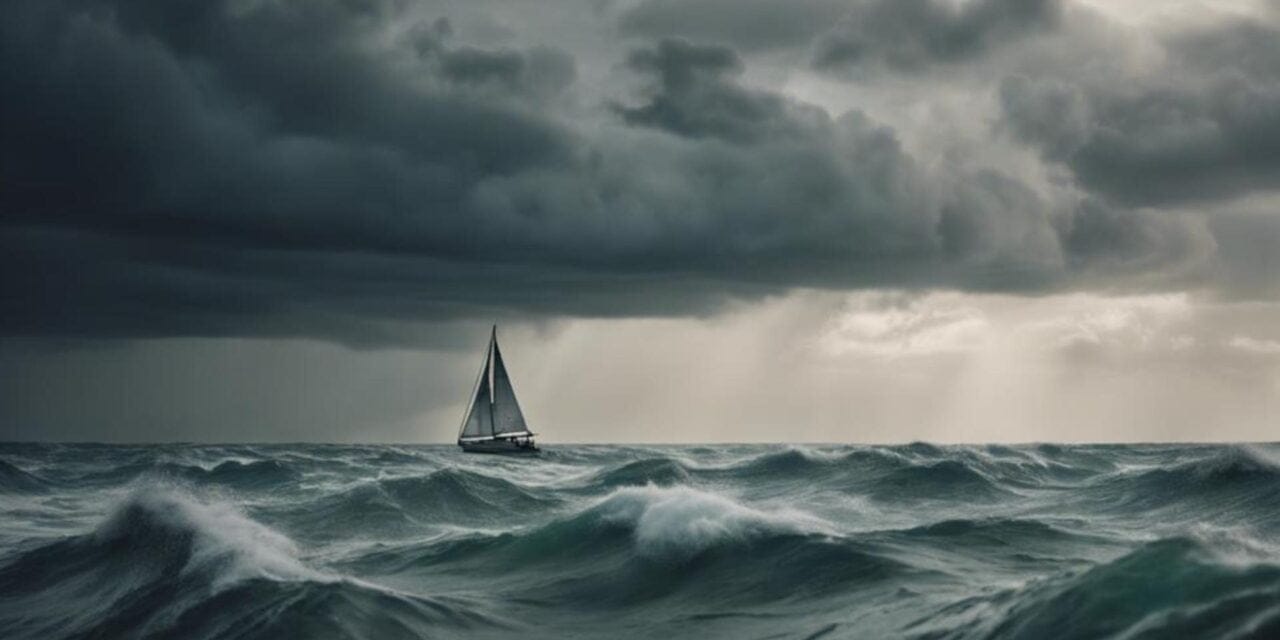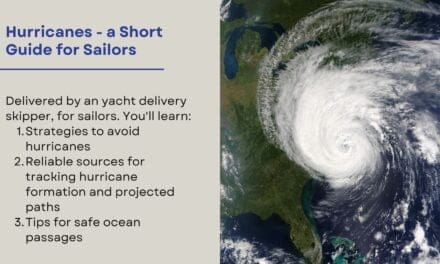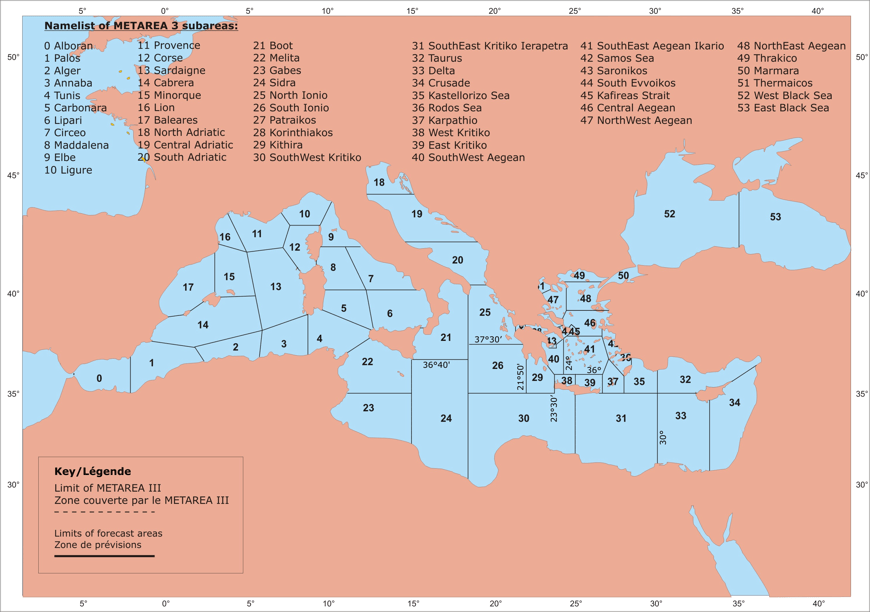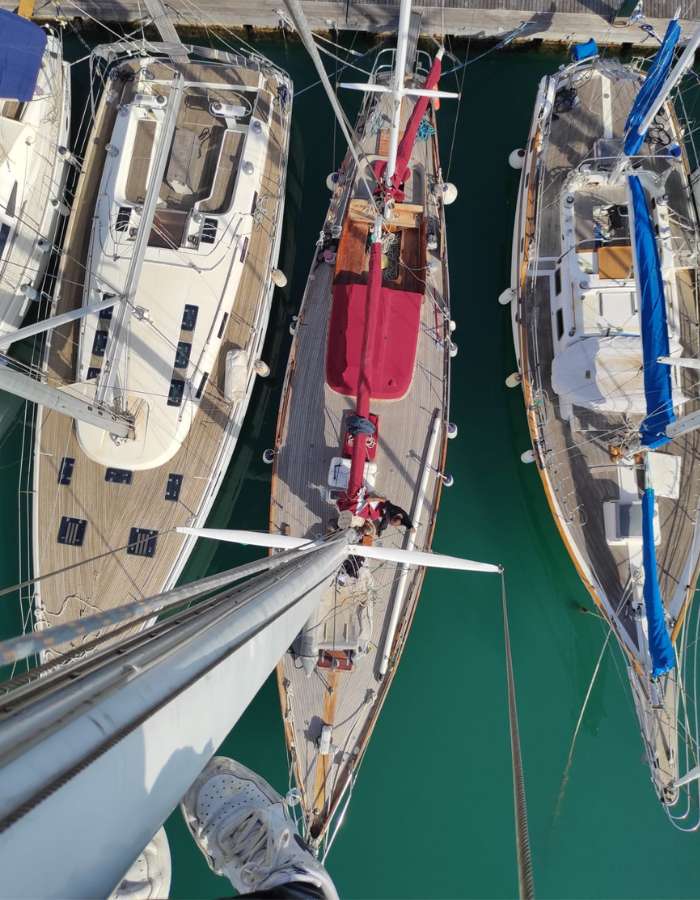Monsoons can shorten your sailing routes if you catch them just right. Leveraging their powerful winds could turn a long journey into a swift and exhilarating one. However, the same winds can become perilous during peak monsoon seasons, with violent storms and unpredictable sea conditions. It is important to find a balance between using these winds to your advantage and knowing when to avoid them entirely. So, how do you navigate this delicate balance and guarantee a safe, successful voyage?
Monsoon Patterns
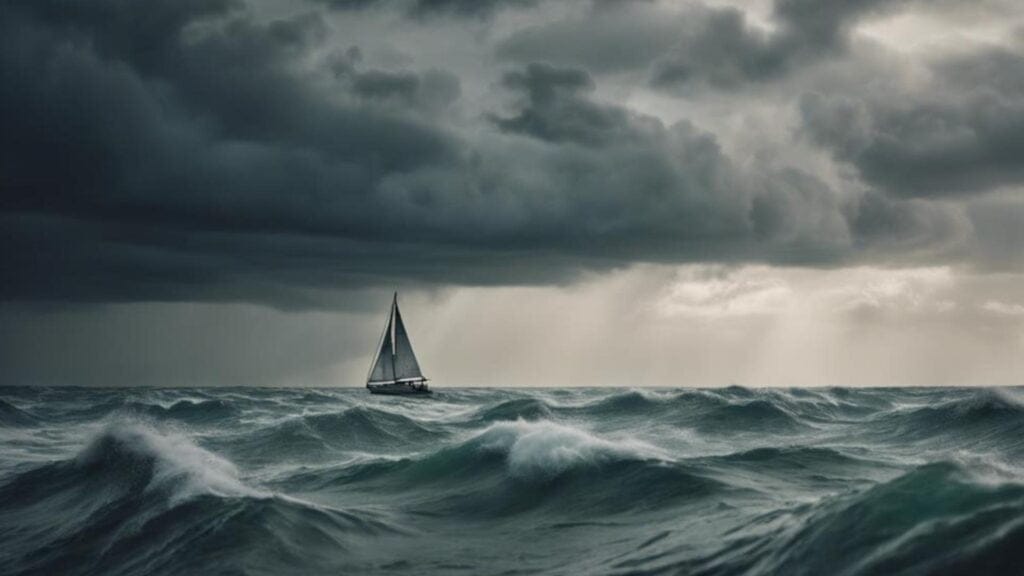
Knowing monsoon patterns is important for sailors seeking to leverage these seasonal wind shifts for efficient navigation while minimizing risks. Monsoons are characterized by predictable shifts in wind direction and substantial rainfall.
To capitalize on monsoon winds, you need to know the specific timing and locations of these shifts. For instance, the Indian Ocean monsoon impacts weather pattern, with the southwest monsoon beginning in June and the northeast monsoon starting around October. These predictable shifts can provide consistent winds, ideal for downwind sailing, enhancing propulsion efficiency.
However, peak monsoon seasons bring extreme weather conditions and turbulent seas, requiring caution. Avoid sailing during these periods to mitigate risks. Always plan your trip using passage planning charts and monitor weather forecasts to avoid sailing in harsh condition.
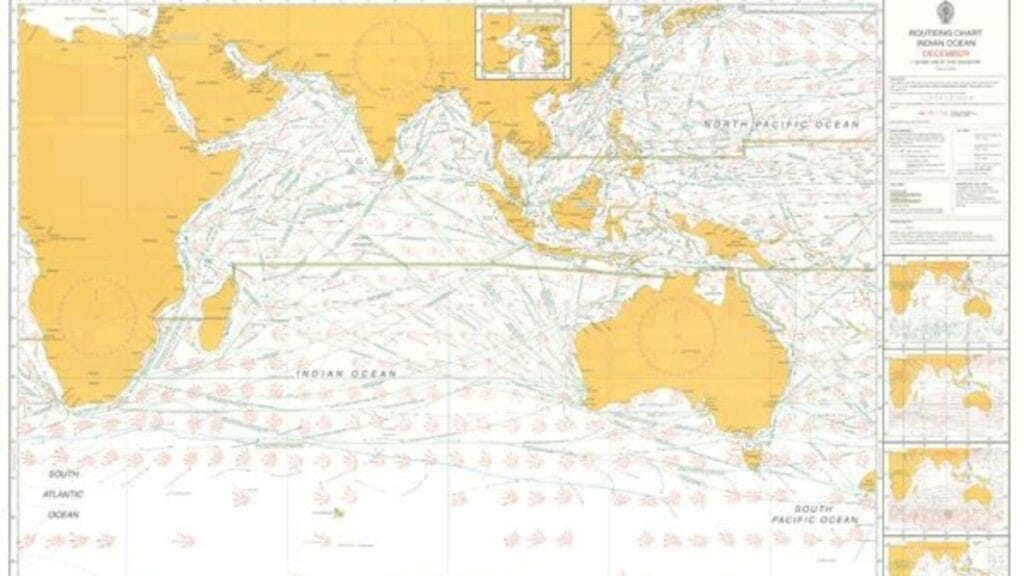
Ideal Sailing Conditions
| Season | Wind Direction | Wind Strength (kn) | Notes |
| Winter (Dec-Feb) | Northeasterly | 15-25 | Northeast Monsoon; cool and dry winds |
| Summer (Jun-Sep) | Southwesterly | 20-30 | Southwest Monsoon; warm and wet winds |
| Transition (Mar-May) | Variable | 5-15 | Winds shift; transitional period |
| Transition (Oct-Nov) | Variable | 10-20 | Winds shift; transitional period |
Although monsoons can present challenges, they also create ideal sailing conditions with consistent and strong winds that experienced sailors can use for efficient navigation. These robust wind patterns provide exceptional wind propulsion, allowing for swift travel across expansive oceanic regions.
For instance, in the Indian Ocean and South China Sea, monsoon winds can propel your vessel at impressive speeds, making long-distance journeys more feasible and time-efficient. Just plan your passage at the right time!
Preparing for Monsoon Sailing
When preparing for monsoon sailing, you’ll need to focus on essential gear and maintenance to guarantee safety and performance.
Regularly check monsoon forecasts by satellite or radio and equip your boat with strong sails and secure additional, reserve sails and ropes to manage intense wind conditions.
Check ocean currents on your way. You probably don’t want to cross are where strong wind blows against strong current
Essential Gear and Maintenance
Before starting on monsoon sailing, check all gear (including sails, lines, and rigging) is inspected and maintained to withstand strong winds and heavy rainfall. Gear maintenance is crucial; check sails for any signs of wear and tear, replace frayed lines, and be sure rigging is secure.
Monsoon tips include carrying extra mooring lines and floating anchor to reinforce your storming techniques during sudden squalls and cyclones.

Preventing mold; proper boat ventilation systems are indispensable. Install high-efficiency vents to maintain airflow and minimize mildew growth in the interior, especially during extended wet periods. Regularly clean and dry areas prone to dampness, and consider using dehumidifiers in enclosed spaces.
Safety gear should be top-notch. Verify that life jackets, flares, and first-aid kits are accessible and in excellent condition. Regularly check and maintain the engine, electronics, and other critical systems to ensure functionality in adverse conditions.
Investing in high-quality foul weather gear—waterproof jackets, trousers, and boots—will keep you dry and comfortable, during your sailing passage.
Navigating Weather Challenges
It’s important to secure all loose items on deck and below deck to minimize the risk of damage from strong monsoon winds and waves.
Safety precautions are paramount; consider your vessel’s stability and readiness. Be prepared to adjust your sailing plans rapidly to avoid sudden monsoon squalls or storms. Keep proper watch! Monitoring real-time data for signs of changing monsoon conditions, such as increasing rainfall and shifting wind directions, can give you the upper hand.
Identify sheltered anchorages or marinas in advance, if possible, which serve as safe havens to wait out periods of intense weather. Utilizing these sheltered areas aligns with best sailing strategies, ensuring your vessel remains protected.
Incorporate high-precision instruments to track atmospheric pressure changes and wind patterns. Sharing up-to-date information with other sailors close to you.
Navigating Strong Winds
To navigate strong winds during monsoons effectively, reef your sails to reduce the sail area and prevent overpowering the boat. Wind management is vital; reducing sail area minimizes the vessel’s exposure to high wind forces. Utilize a storm jib or trysail for better sail control, if necessary. These specialized sails are crafted to withstand strong winds, maintaining stability and maneuverability.
Avoid sailing directly downwind as it increases the risk of an accidental jibe, which can be hazardous. Instead, employ maneuvering techniques like sailing at some angle to the wind. Keep your sails off from standing rigging. They (sails) can damage quite fast. IMake calculated maneuvers, ensuring crew safety and vessel integrity.
Never ever do not important, not necessary jobs on-board. Hold on. It’s easy to get injured and way to the nearest doctor could be calculated in days or weeks. So, wait with railing polishing or changing anchor light bulb till you berth in safe marina or anchoring in a quiet bay
Constantly monitor weather forecasts to stay informed about potential wind changes. Adjust your sailing plans accordingly to avoid dangerously strong winds typical during monsoons.
Effective communication strategies are very important. Make sure that all crew members are briefed on emergency procedures and that you have reliable communication equipment on board. Satellite phones, HAM-radios and VHF are indispensable for maintaining contact with coastal authorities and other vessels. Clear, consistent communication can be the difference between a minor inconvenience and a major disaster
Your crew safety is the most important. Equip your vessel with life jackets, harnesses, and other personal flotation devices. Regular drills can enhance preparedness and response times in case of an emergency. Additionally, consider seeking shelter in marinas or safe harbors if the weather conditions deteriorate. Waiting out a monsoon can sometimes be the safest option, securing both your crew and vessel remain unharmed.
Good luck 🙂

